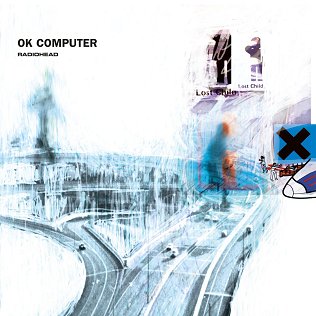Album cover art is not merely a visual adornment but a powerful tool that can provide subtle hints and convey the sonic qualities of an album. It serves as a gateway to the listener's audio experience, setting expectations, and offering a glimpse into the mood, genre, and sonic characteristics of the music contained within. In this article, we will explore the intriguing link between album cover designs and sound quality, showcasing how artists and designers strategically use visual elements to convey the essence of the music.
Setting Expectations with Visual Elements:
Album cover designs possess the ability to capture the essence of an album's sound and evoke emotions even before the first note is played. By carefully selecting visual elements, artists and designers can set expectations for the listener's audio experience.
For instance, the cover of Pink Floyd's "The Dark Side of the Moon" is a perfect embodiment of this concept. The prism and rainbow imagery reflect the album's introspective and psychedelic nature, hinting at the atmospheric soundscapes and ethereal melodies contained within. The cover's stark simplicity and bold color palette align with the album's sonic exploration, setting the stage for a captivating auditory journey.
Conveying Mood and Genre:
Visual elements of album covers are often employed to convey the mood and genre of the music. Whether it's through typography, color schemes, or imagery, artists and designers can create a visual language that aligns with the sonic qualities of an album.
Consider the cover art for Miles Davis' "Kind of Blue." The serene, blue-tinted photograph, featuring the silhouette of the band members, exudes a sense of calmness and coolness. This minimalist approach aligns with the album's laid-back and introspective jazz compositions, reflecting the album's genre and serene ambiance. The cover art effectively communicates the mood and musical direction, ensuring that listeners are mentally prepared for the experience that awaits them.
Reflecting Sonic Characteristics:
Intricate album cover designs can also mirror the sonic characteristics of the music. Visual elements can allude to the soundscapes, instruments, or production techniques employed in an album, creating a harmonious relationship between the audio and visual realms.
A prime example is the cover of Radiohead's "OK Computer." The uncropped version of the album cover is a distorted, fragmented image of a heavily compressed landscape reflects the album's themes of technology, isolation, and societal disconnection. The collage-like composition mirrors the unconventional, layered production techniques employed in the music. This synergy between the album cover and sound quality establishes a coherent artistic vision, allowing listeners to delve into the sonic landscape with a heightened sense of comprehension.

Several other albums demonstrate the profound connection between album cover art and sound quality:
The Beatles' "Sgt. Pepper's Lonely Hearts Club Band": The vibrant, elaborate collage of diverse characters mirrors the album's eclectic mix of musical styles and innovative production techniques.
Joy Division's "Unknown Pleasures": The simple, enigmatic waveform visualization serves as an iconic representation of the band's dark, post-punk sound, and lyrical themes.
Nirvana's "Nevermind": The cover, featuring a baby swimming underwater, captures the raw energy, youthful rebellion, and the contrasting moments of calmness found in the album's grunge rock sound.
Album cover art possesses a remarkable ability to provide listeners with glimpses into the sonic qualities, mood, and genre of an album. Through thoughtful selection of visual elements, artists and designers can establish a cohesive and immersive experience that enhances the connection between music and audience. From evoking emotions to reflecting genre and sonic characteristics, album cover art plays a vital role in setting expectations and enriching the listener's audio journey. It is a testament to the profound synergy between the visual and auditory arts




Share:
Soulnote A1 Integrated Amplifier
Ruark Audio R410 - A Symphony of Design and Sound